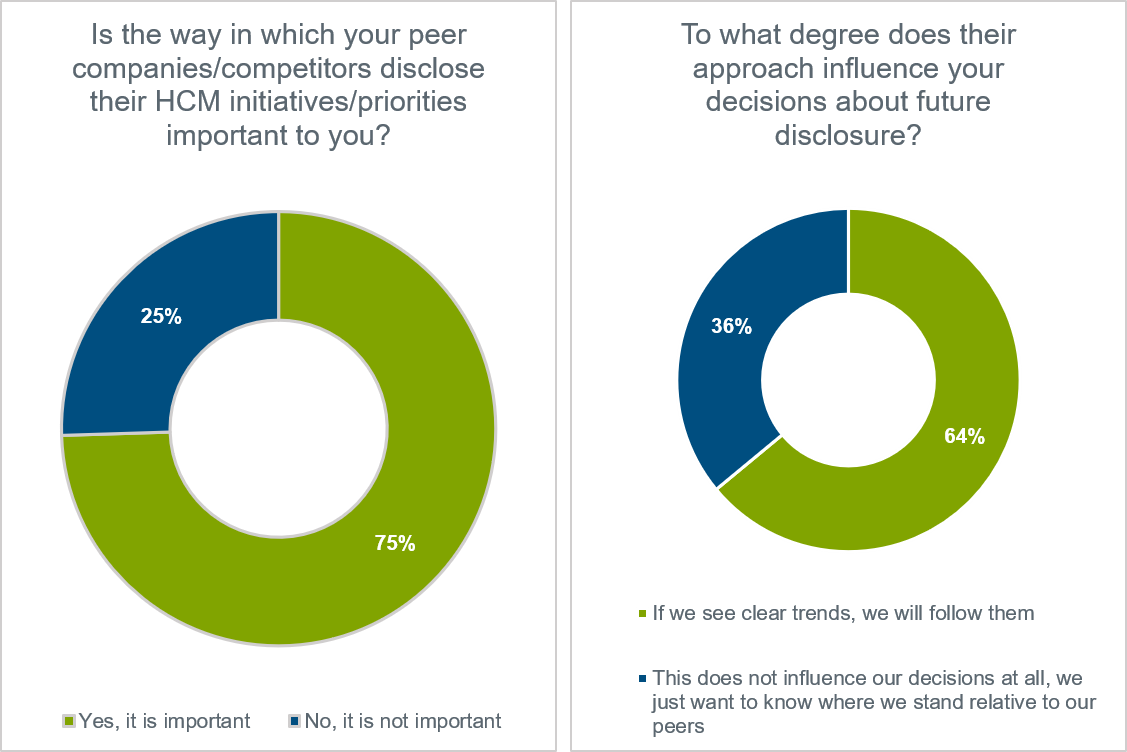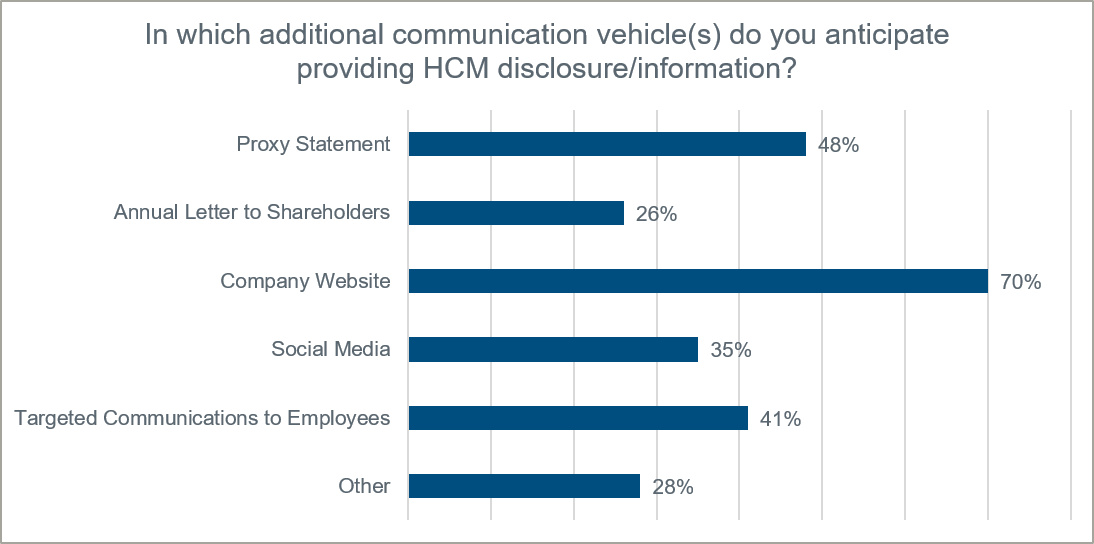
Advisor Blog | Sep 2021
Human Capital Management Disclosure: Emerging Best Practices
Two clear trends companies can incorporate into their HCM disclosure strategy for 2022 that can have meaningful impact.
It’s hard to believe that we are rounding the last corner of 2021 and heading straight into 2022. And 2020—the year the US Securities and Exchange Commission (SEC) gave us its new Human Capital Disclosure (HCM) rules—feels like a million years ago. For those who may have been sidetracked with other things in 2020, a reminder, the SEC’s rule required companies to disclose “any human capital measures or objectives that the company focuses on in managing the business” in their Annual Report/10Ks. The rule itself was vague and, not surprising, most companies disclosed the bare minimum. Many indicated they were waiting to see how other companies approached their disclosures.
So, as we approach “year two” of HCM disclosure, what have we learned? If we look only at Annual Reports/10Ks, we can say that almost all companies presented some type of qualitative and quantitative metrics, although quantitative metrics were less frequent and often high-level. We also found that most companies included qualitative information about the impact of COVID-19 on human capital, as well as insight on diversity, equity and inclusion (DE&I), but at the end of the day, it was almost impossible to find anything meaningful that we could begin to point to as “best practice.” However, there are two trends we see emerging around HCM disclosure strategy that companies can rely on as they plan for 2022 and beyond:
1. Look at what your peers are doing.
It is always helpful to understand what your industry peers (as well as general peer companies that you compete with for talent) are doing with respect to their HCM priorities and initiatives and how they are presenting them externally. This means looking at not just the HCM disclosure in your peers’ Annual Report/10K, but at any other external means of communication that could include HCM messages, including proxy statements, corporate sustainability reports, social media, and company websites. Taking an inventory of the HCM topics your peers are disclosing and how and where they are discussing them can help your company make decisions about which communication platforms/tools may be the most effective for the coming year and farther into the future. Not surprising, findings from our 2021 Pearl Meyer HCM Disclosure Quick Poll validated that most companies (75%) care about the way their peers/competitors addressed HCM initiatives and priorities, with 64% indicating that if they see clear trends, they may follow them.

2. Do not rely solely on your Annual Report/10K.
Many companies already go beyond their Annual Report/10Ks to promote their HCM commitments and initiatives and we expect companies to continue to lean in to their HCM strategies and leverage various methods of communication to help ensure their HCM messages get more visibility. Findings from our survey revealed that over half (52%) of respondents are planning to use additional methods of communication (many of which are more reader-friendly communication tools) beyond the 10K to reach various audiences.

After a year of HCM analysis, what we know for sure is that HCM topics are important to more than one or two stakeholder groups, namely the SEC and investors. Employees, customers, prospective talent, media outlets, politicians, and more all have an interest in how companies are investing in their people. By implementing these two best practice steps, you can help ensure that your disclosure strategy is not lagging those of your peers and that your HCM messages are not buried in a 100-page plus legal document where most people will never find them.
